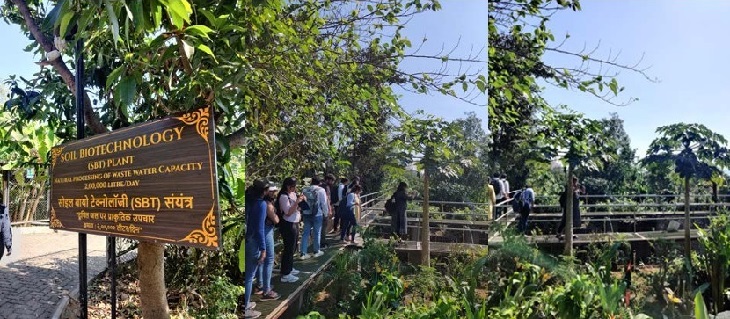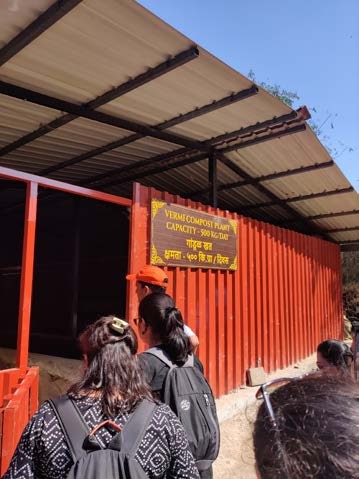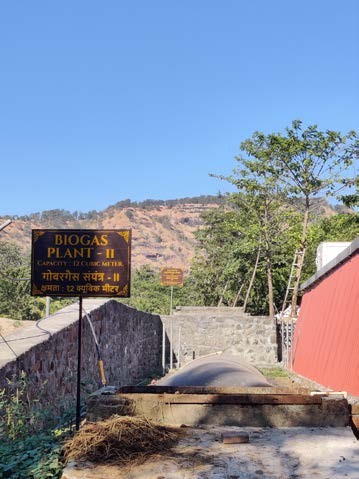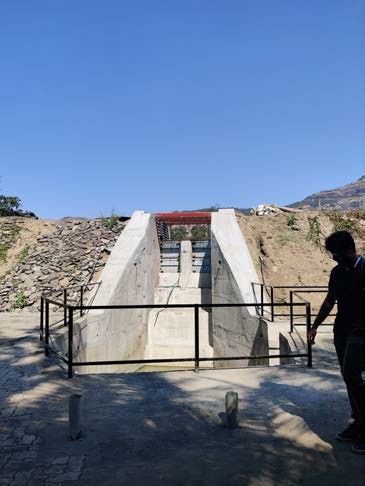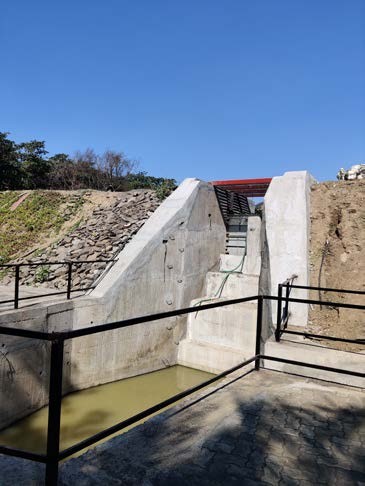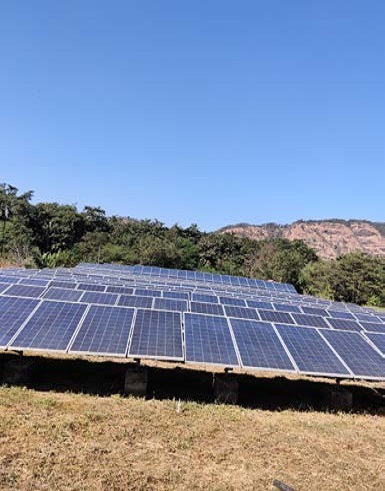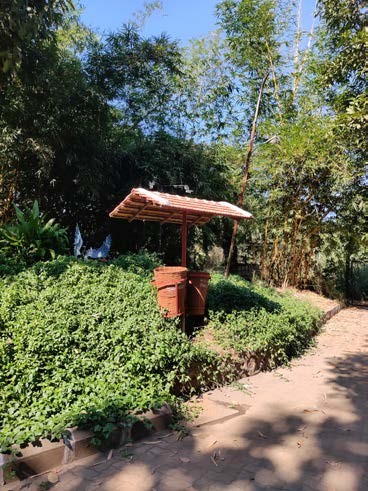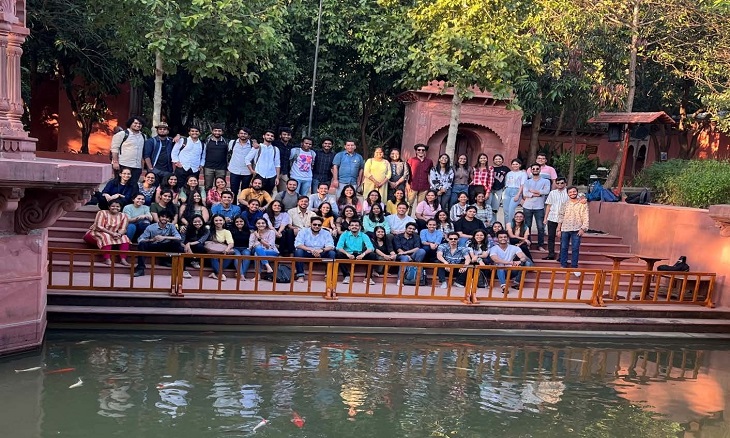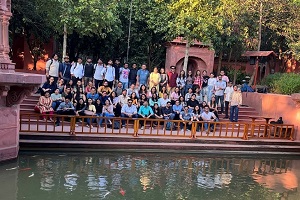| Session | 2022-23 |
| Year | 5th |
| Date | 19th December, 2022 |
| Faculty Coordinator | Prof.Sarojini , Prof. Avinash S. |
| No. of Students | 60. |
Aim:
To study and analyse the various specialised services provided for sustainability and reusing material existing on site.
Objectives:
- To study the water treatment plant installed at Govardhan Eco Village.
- To examine rainwater harvesting facility used for the water necessity of the site.
- To study the biodegradable materials and construction methods utilised for Govardhan Eco Village.
Accessibility:
Govardhan Eco Village ( Wellness Retreat Centre) is situated at P.O. Hamrapur, Wada Taluka, District Palghar since 2010. The site area is around 120 acres including vast plantations, goshala, rainwater harvesting, accommodations, halls, pool and various other amenities provided for the visitors and the swamys residing inside the campus. It is easily accessible by road. People arriving from Mumbai can use the train service till Palghar and come by shuttle buses available for Govardhan Eco Village, or catch a public transport or arrange a private bus/cab. The batch of PiCA 2023 arranged for a private bus transport for 60 students from Pillai College of Architecture to Govardhan Eco Village and back on the 19th December, 2022. The average time taken was 3 hours. Govardhan Eco Village is situated around 120kms from Mumbai and from Panvel.
Observations:
- Soil Biotechnology Plant (SBT): The water filtration takes place in 3 stages. All the waste water generated due to flushing or cooking is gathered in a collection chamber. From the chamber the water is filtered via baffle chambers containing plants and various other layers of soil where the sludge is collected at the bottom and the clean water flows further. At the end of the process, the filtered reusable water is again sent back to accommodations for washrooms. It’s capacity is 200000 l/day.
- Rainwater Harvesting Plant: A 10m deep rainwater collection pond has been dug on site which has the capacity to store upto 10 million litres of water. During the monsoon season the rains that hit the Sahyadri mountains surrounding Govardhan Eco Village dribble into the pond. There are a number of pipes placed strategically over the site to collect the rainwater and flow it into the main rainwater pond. This collected rainwater is used for drinking and agricultural purposes. This collected rainwater can be utilised year round for about 6-7 months. In case of overflow, the water is let out of the pond and is allowed to be collected on site.
- Vermi Composting Plant: Used flowers/fruits and the waste from the Goshala is collected and deposited in pits at the Compost plant where earthworms decompose the ingredients further and the end of the cycle manure is generated which can be used for agricultural purposes or landscaping. The capacity of this Vermi Compost Plant is 500kg/day.
- Solid Waste Processing Plant: The natural process of composting wet waste into compost has been provided on site and has the capacity of processing 500kg of waste per day. The solid waste like food or agricultural waste is chopped manually (machines are currently unavailable) and then mixed with the soil existing on site. This mixed soil and waste is laid outside to dry in the sun for a fortnight. After that it is stacked and stored at a normal temperature inside the Plant for 1 month. After 1 month this compost is ready to be used as manure for agriculture, organic farming.
- Solar Energy Plant: There is also solar energy panels laid on site which generate 150Kw/day electricity which is utilised in accommodations, office and halls all around the site.
- Biogas Plant: Biogas plant has also been provided on site where cowdung is collected at one end and all the gases released are collected inside the plant. These gases are processed and then the electricity generated is used to power the streetlights of Govardhan Eco Village.
- Besides these specialised services during the construction of the houses and halls of Govardhan eco village, steps were taken to ensure sustainability and create green buildings. A building is called green building when all the material used for it’s construction has been procured from a 100km radius. In Govardhan Eco Village the buildings are built from bricks which are made on site from mud. Hence these bricks are biodegradable. They also have a lifespan of around 80-90 years which is almost twice the normal lifespan of a brick. These bricks are available in 6 different shapes and sizes wherein the biggest brick weighs around 9- 10kgs. These bricks are primarily used in G+2 construction where no pillars are required. These bricks also do not need plastering or painting as they have their own aesthetic and undergo very less wear and tear. Mud is used as mortar mixed with lime which acts as a insecticide and prevents unwanted organisms and pests to enter the building.
- Last we visited the Vrindavan forest.
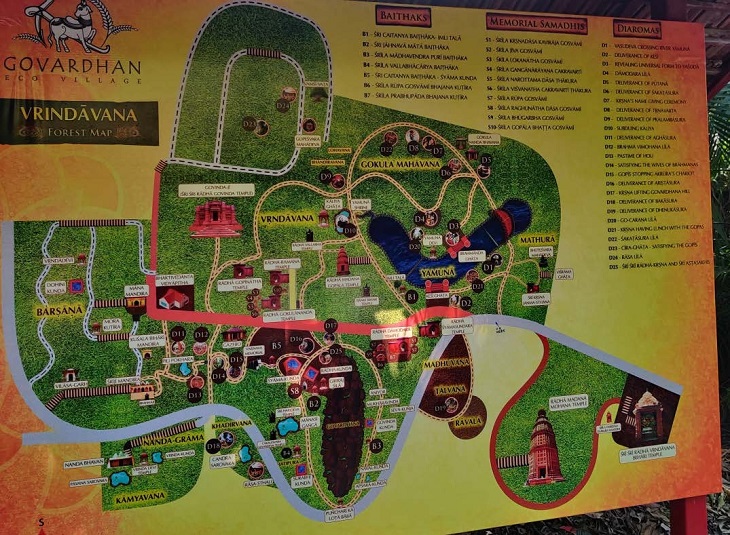
Services Provided on Site
